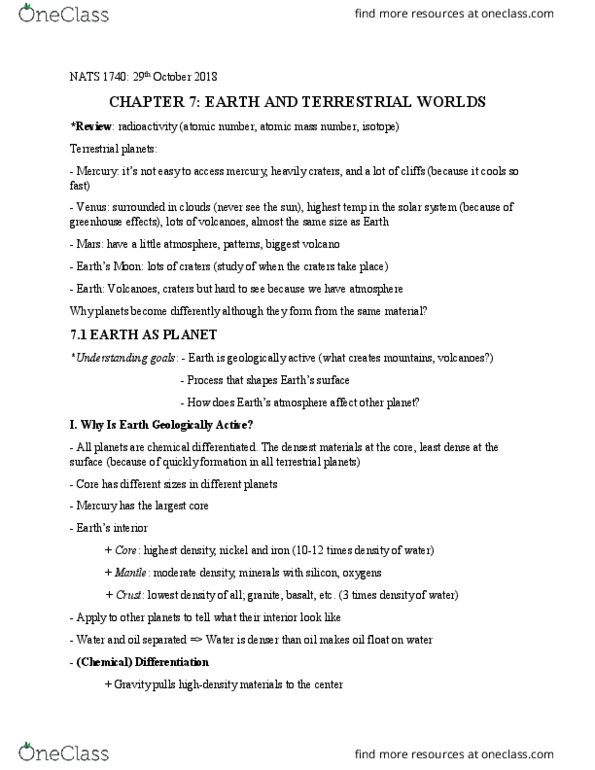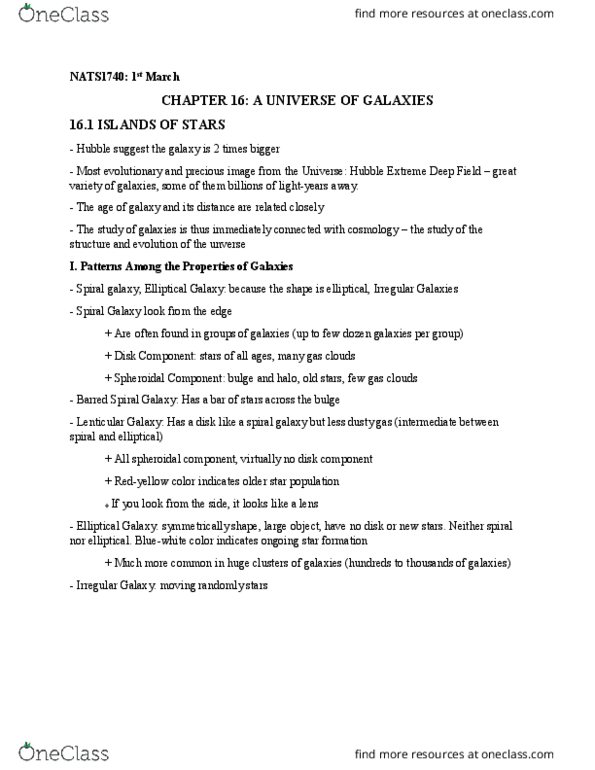NATS 1740 Lecture Notes - Lecture 24: Mass Number, Atomic Number, Basalt
NATS 1740 verified notes
24/37View all
Document Summary
*review: radioactivity (atomic number, atomic mass number, isotope) Mercury: it"s not easy to access mercury, heavily craters, and a lot of cliffs (because it cools so fast) Venus: surrounded in clouds (never see the sun), highest temp in the solar system (because of greenhouse effects), lots of volcanoes, almost the same size as earth. Mars: have a little atmosphere, patterns, biggest volcano. Earth"s moon: lots of craters (study of when the craters take place) Earth: volcanoes, craters but hard to see because we have atmosphere. *understanding goals: - earth is geologically active (what creates mountains, volcanoes?) The densest materials at the core, least dense at the surface (because of quickly formation in all terrestrial planets) Core has different sizes in different planets. + core: highest density, nickel and iron (10-12 times density of water) + mantle: moderate density, minerals with silicon, oxygens. + crust: lowest density of all; granite, basalt, etc. (3 times density of water)




